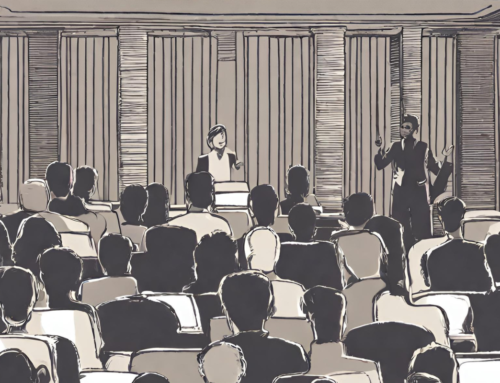Many executives believe, incorrectly, that even though they may not give the most brilliant of speeches, they come to life in the Q ‘n’ A. They prefer the off-the-cuff because, well, it requires less preparation and they’re busy people. But they’ll tell you something along the lines of "spontaneity is good for me" in justification.
That’s the wrong way to think about it. The problems with Q n A are several. First, when an executive is unscripted, he may say things he shouldn’t. If the press is present, he can make news unnecessarily and unfortunately. Second, you can’t fully control the questions that are asked. The whole presentation may end on a down note despite the best efforts of everyone involved if the last question is something like, "So, tell us about that corruption scandal!" Third, even when the questions are positive and the executive is on message, spontaneous answers tend to be sloppy. It’s rare the executive who doesn’t ramble a bit when asked a question she likes on a subject with which she’s familiar. Executives, like just about everyone else, enjoy displaying expertise.
So how to control this unfortunate fondness for Q n A — and control the damage?
Prepare your executive. Give her a mock interview, asking the most difficult questions you can work up. Grill her relentlessly, and the actual event will seem easy by comparison.
Train him in spontaneous speaking. The way to give a coherent answer off the cuff is to think for a moment, get a headline response, state it, then give a few details or supporting arguments, then repeat the headline. If you train executives to speak in this way, they are less likely to go off message, lost in the thickets of their own rhetorical mysteries and excesses. Remember: headline — supporting points — headline. That’s all.
Videotape her to help with body language. The biggest giveaway is often not a word, but a defensive gesture. When an executive is talking on difficult subjects, she needs to be schooled in open, clear, frank non-verbal behavior. I’ve seen many an executive ruin a good answer with suddenly crossed arms or a scowl at the wrong moment.
Save a brief statement as a closer after the Q n A. This way, you can at least control the last thing everyone hears. It helps keep things up beat.
Q n A, in spite of widespread executive fondness for it, is dangerous territory. Proceed with caution. Prepare well. And be prepared to turn off the lights if it all goes pear-shaped despite your preparations.








Leave A Comment